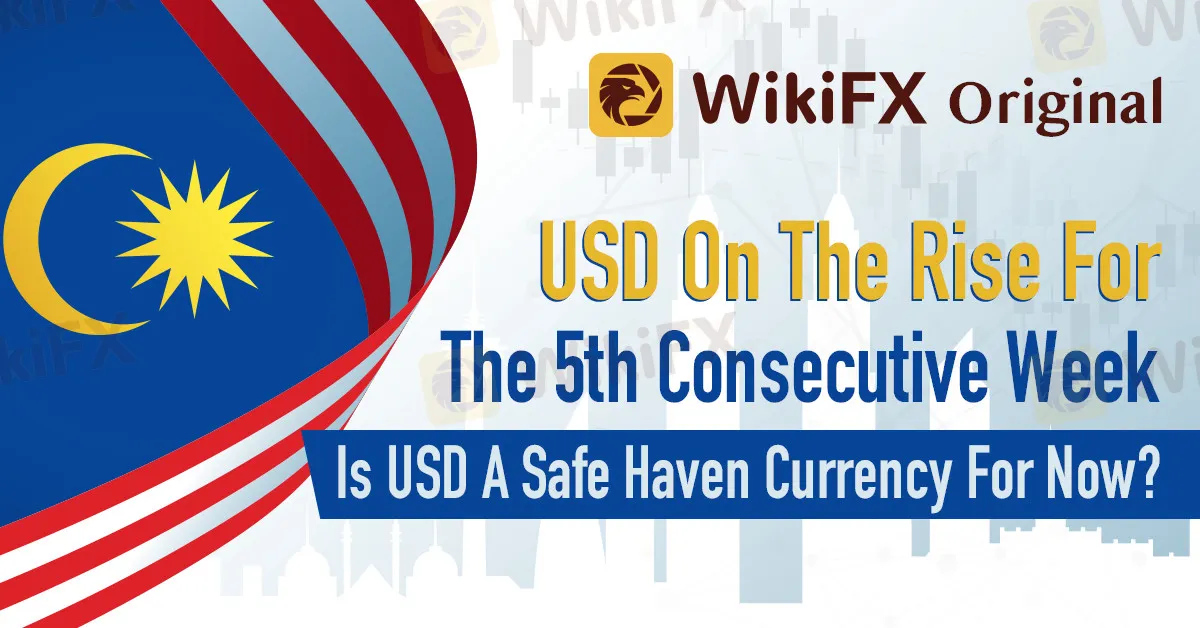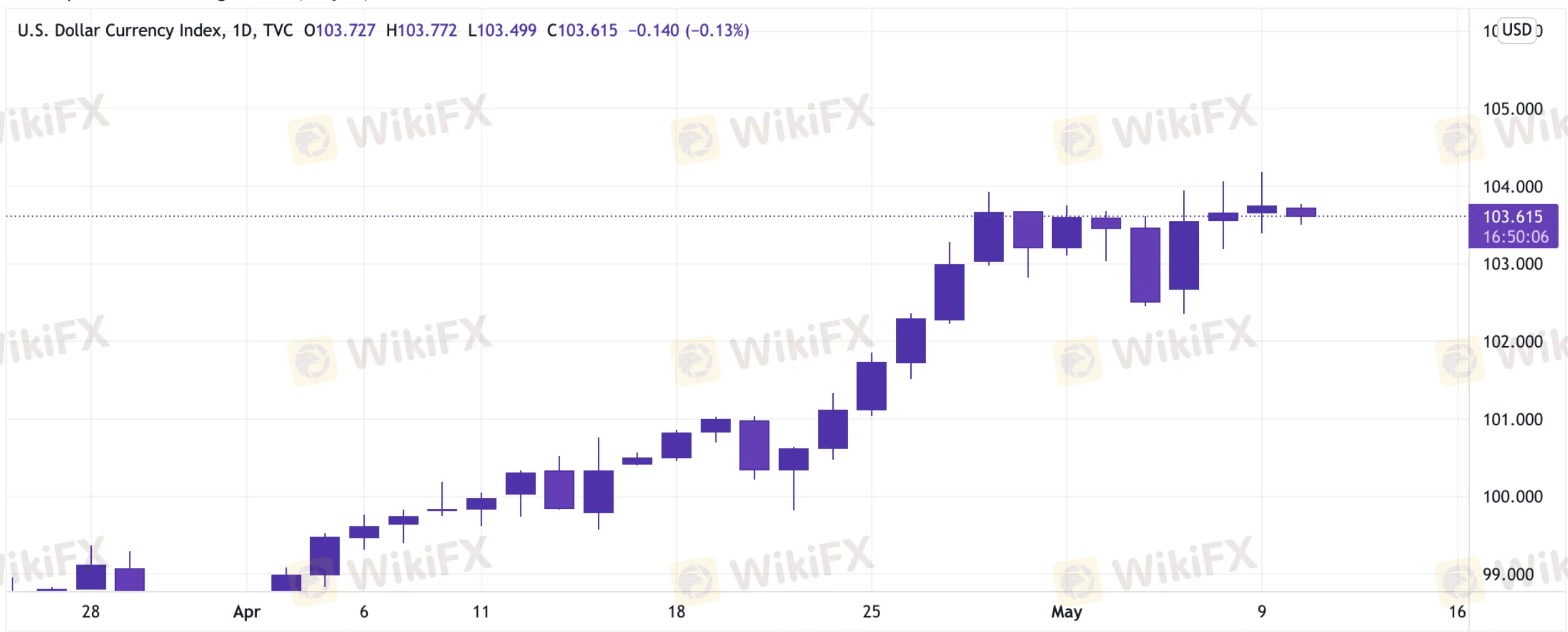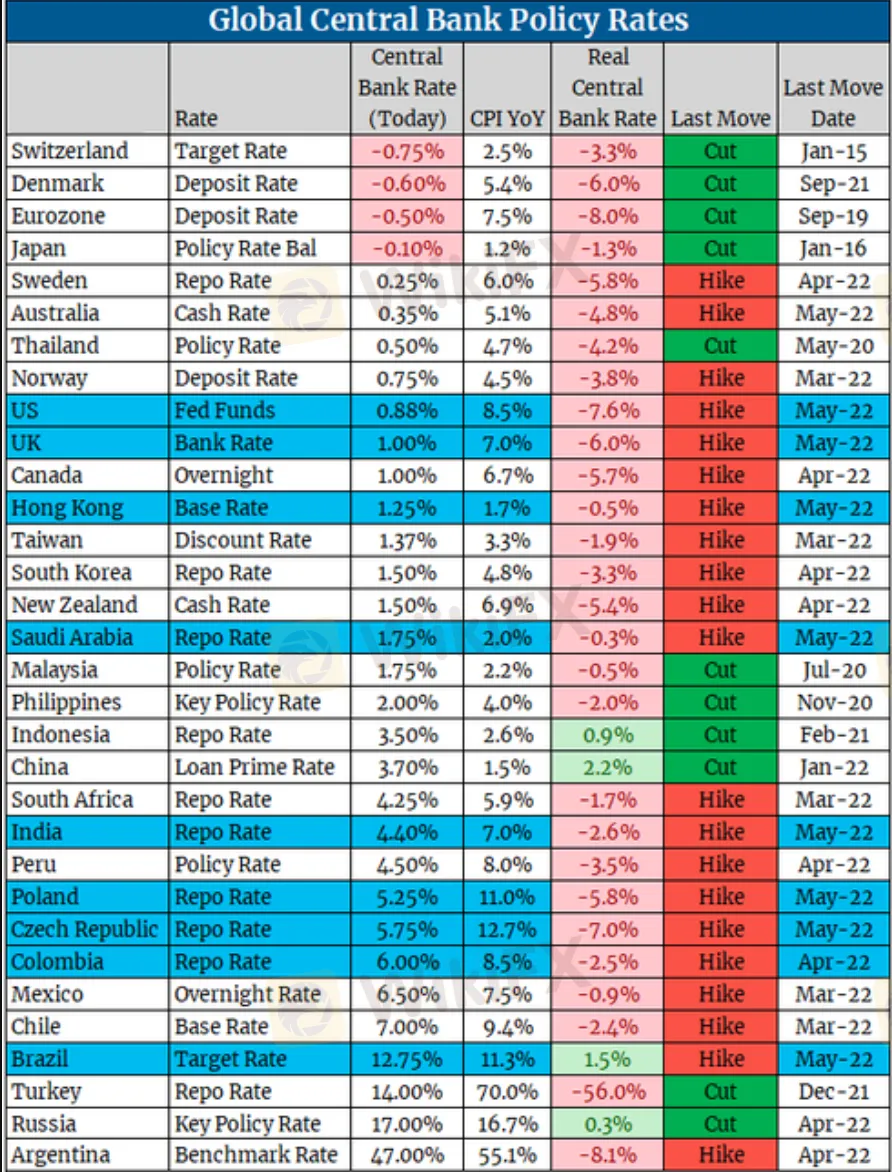简体中文
繁體中文
English
Pусский
日本語
ภาษาไทย
Tiếng Việt
Bahasa Indonesia
Español
हिन्दी
Filippiiniläinen
Français
Deutsch
Português
Türkçe
한국어
العربية
USD On The Rise For The 5th Consecutive Week | Is USD A Safe Haven Currency For Now?
Abstract:The U.S. dollar is up for the fifth consecutive week as traders brace themselves for the upcoming CPI and PPI reports. The rise of USD could be continue in the foreseeable future and could cause disruptions especially in the emerging markets.

<WikiFX Malaysia Original – Editor: Fion>
On Monday (May 9), the U.S. dollar index hit a 20-year high of 104.1921, stemming in part from concerns about the Federal Reserve‘s ability to fight high inflation, sparking risk aversion and boosting the dollar’s safe-haven appeal. As of writing, the USD is trading at 103.615 and this marks the fifth consecutive week of its rally as the U.S. Treasury yields climb.

Samy Chaar, the chief economist at Lombard Odier, said the dollar's surge has the potential to “disrupt the broader market environment and expose economic and financial vulnerabilities in the existing financial system.”
The dollar index has gained about 8% year-to-date. Although many analysts argue that the dollar has reached its peak, this current uptrend seems difficult to reverse as the dollar‘s safe-haven appeal remains intact. Barclays’ dollar financing stress indicator is approaching its highest level in 7 years and Barclays range analysis reports a possibility for the dollar index to rise another 2-3%.
As the dollar strengthens, developing countries must tighten monetary policy to prevent their currencies from depreciating. Failure to do so will increase inflation and push up the cost of servicing dollar-denominated debts. In just a few days since the start of May, several central banks from emerging economies have raised their interest rates accordingly too.

Generally, in foreign exchange and commodity markets, a stronger dollar makes dollar-denominated commodities more expensive, consequently dampening consumer demand and thus prices. However, that has not happened this year due to existing supply chain challenges such as Russia-Ukraine conflict and global epidemic blockade that have hampered production and trading of major commodities which have been driving prices up.
On the contrary, the Fed is more than happy to see the dollar rise even higher at the moment. Société Générale S.A. expects that every 10% appreciation of the dollar could lead to a 0.5 percentage point drop in the U.S. CPI. Therefore, the Fed may also raise interest rates by 200 basis points, while the Fed's policy rate could reach a peak of approximately 3.5% by mid-2023.
Federal Reserve Bank of Minneapolis President, Neel Kashkari explained on Friday that suppose if supply chain issues continue to persist, the Fed ought to be more aggressive in raising interest rates while facing the risk of recession. However, he also mentioned that this approach alone is unlikely to be the core solution to bring inflation down to the Feds 2% target. He reiterated that policymakers should pay close attention to the degree of interest rate rise to maintain a healthy equilibrium.
The U.S. will be releasing the Consumer Price Index (CPI) and Producer Price Index reports on both May 11 and 12 (UTC +8) respectively.


According to the survey carried out by Reuters, economists are expecting to see the median estimate of prices rise at an annual rate of 8.1% in April. It is time for dollar traders and investors to fasten their seatbelts once again in preparation for a volatile ride.
<WikiFX Malaysia Original – Editor: Fion>

Disclaimer:
The views in this article only represent the author's personal views, and do not constitute investment advice on this platform. This platform does not guarantee the accuracy, completeness and timeliness of the information in the article, and will not be liable for any loss caused by the use of or reliance on the information in the article.
Read more

BlackBull: A Closer Look at Its Licenses
When selecting a broker, understanding its regulatory standing is an important part of assessing overall reliability. For traders seeking to protect their capital, ensuring that a platform operates under recognised and stringent oversight can make all the difference. Keep reading to learn more about BlackBull and its licenses.

Dark Side of AETOS: They Don’t Want You to Know
AETOS is an Australia-based broker. All over the internet, you will find positive reviews about this broker, but no one is talking about the risks involved with AETOS. However, we have exposed the hidden risks associated with AETOS

Contemplating Investments in Quotex? Abandon Your Plan Before You Lose All Your Funds
Have you received calls from Quotex executives claiming to offer you returns of over 50% per month? Do you face both deposit and withdrawal issues at this company? Or have you faced a complete scam trading with this forex broker? You're not alone. Here is the exposure story.

15 Brokers FCA Says "Are Operating Illegally" Beware!
If a reputable regulator issues a warning about unlicensed brokers, it's important to take it seriously — whether you're a trader or an investor. Here is a list you can check out- be cautious and avoid getting involved with these scam brokers.
WikiFX Broker
Latest News
Exness Halts New India Accounts Amid Regulatory Change
eToro and BridgeWise Launch AI Smart Portfolio for US Mid-Cap Stocks
Contemplating Investments in Quotex? Abandon Your Plan Before You Lose All Your Funds
How family offices can protect the bottom line when putting family members on payroll
Meta says it won't sign Europe AI agreement, calling it an overreach that will stunt growth
Ether and trading stocks take the crypto spotlight as Congress passes historic stablecoin bill
Inflation outlook tumbles to pre-tariff levels in latest University of Michigan survey
Peter Thiel-backed cryptocurrency exchange Bullish files to go public on NYSE
What a Trump, Powell faceoff means for your money
Ether takes crypto spotlight as Congress passes historic stablecoin bill
Currency Calculator


